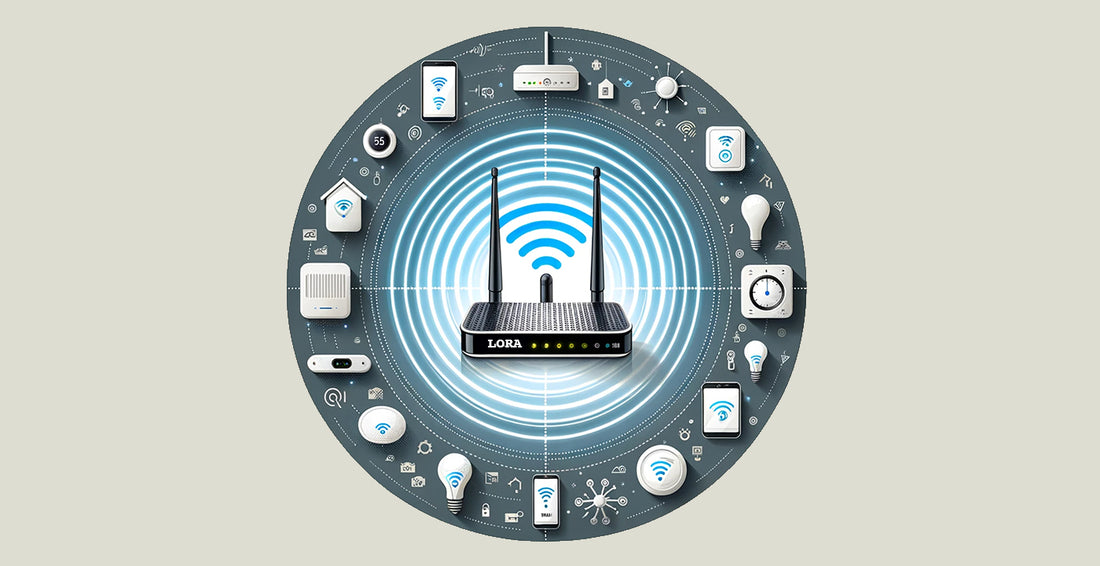
Understanding LoRaWAN Gateways: A Simple Guide for Building and Facility Managers
Share
The Basics of LoRaWAN
Imagine a scenario where various sensors in your building - from temperature monitors to security systems - need to send information over long distances without using much power. This is where LoRaWAN comes in. It's a network specifically designed for long-range communication, far surpassing the capabilities of Wi-Fi or Bluetooth. LoRaWAN is ideal for connecting devices spread across large areas, like big buildings or multiple facilities, efficiently and reliably.
What is a LoRaWAN Gateway?
A LoRaWAN Gateway acts as a central hub in this network. You can think of it as a sophisticated post office that collects data from various sensors and

devices (like a mailbox) and then sends this information to the Internet (like mailing a letter). This gateway is critical in ensuring that the data from your building's sensors reaches the server where it can be monitored and analyzed.
LoRaWAN Gateway vs. LoRaWAN End Device
It's important to distinguish between a LoRaWAN Gateway and a LoRaWAN End Device (like a sensor). While the gateway transmits data to the Internet, the end devices are the ones collecting this data. Imagine the end devices as workers gathering information and the gateway as the manager who sends this information to the headquarters. A single gateway can handle data from hundreds of these devices, making it a scalable and efficient choice for large facilities.
Deployment and Network Resilience
When deploying LoRaWAN Gateways, it's common to set them up in overlapping patterns. This ensures that if one gateway has an issue, others can pick up the slack, maintaining a consistent flow of information. For a building manager, this means reliable and uninterrupted data transmission across your facility, enhancing operational efficiency and security.
Private and Public Networks
LoRaWAN networks come in two flavors: private and public. A private network
offers more control

and security, ideal for sensitive data in your facility. On the other hand, a public network can be more accessible and requires less infrastructure on your part. The choice depends on your specific needs and the nature of the data being transmitted.
Connectivity Options
The LoRaWAN Gateway typically connects to the Internet via Ethernet for speed and stability. However, in some cases, especially in remote areas of a building or outdoor facilities, it might use alternatives like Wi-Fi or cellular connections (LTE).
Applications and User Interface
LoRaWAN technology is versatile. Whether it's monitoring environmental conditions, tracking assets, or ensuring security, the gateway facilitates a wide range of

applications. Moreover, many LoRaWAN systems come with user-friendly interfaces, allowing you to easily understand and utilize the data collected for better management and decision-making.
Security in LoRaWAN Networks
In a world where data breaches are a constant concern, security is paramount. LoRaWAN Gateways are designed with security in mind, especially in private networks, ensuring that the data from your building's sensors is transmitted securely.
FAQs
1. What is a LoRaWAN Gateway? A: A LoRaWAN Gateway is a device that connects various sensors and IoT devices in your building to the Internet. It's like a bridge that relays data from these devices to a central server for analysis and monitoring.
2. How does a LoRaWAN Gateway differ from traditional Wi-Fi routers? A: Unlike Wi-Fi routers, LoRaWAN Gateways are designed for long-range communication with low power consumption. They can connect devices over much larger distances, making them ideal for large facilities or multiple buildings.
3. Can one LoRaWAN Gateway support multiple devices? A: Yes, a single LoRaWAN Gateway can support hundreds or even thousands of end devices, depending on the data rate and frequency of communication.
4. What types of devices can connect to a LoRaWAN Gateway? A: A wide range of devices can connect, including environmental sensors, security systems, energy meters, and asset tracking devices. Essentially, any device designed for LoRaWAN compatibility can connect.
5. Is it difficult to install a LoRaWAN Gateway? A: The installation process is generally straightforward. It involves placing the gateway in a suitable location (often high up for better coverage), providing power, and connecting it to the Internet, via Ethernet, WiFI, or Cellular.
6. Are LoRaWAN Gateways secure? A: Yes, they are equipped with robust security features. Data encryption and secure authentication protocols ensure that the data transmitted is protected from unauthorized access.
7. How do I choose between a private and a public LoRaWAN network? A: Private networks offer more control and are better for sensitive data, while public networks reduce infrastructure needs. Your choice should depend on your specific requirements for data control, security, and infrastructure investment.
8. Can LoRaWAN Gateways function outdoors? A: Yes, many LoRaWAN Gateways are designed to be weather-resistant and can function effectively in outdoor environments, making them suitable for external facility monitoring.
9. How does a LoRaWAN Gateway enhance facility management? A: By providing real-time data from various sensors throughout your facility, the gateway allows for proactive management, energy efficiency, better security, and overall operational optimization.
10. What should I consider when deploying LoRaWAN Gateways? A: Consider the coverage area, the number and types of devices to be connected, the gateway's placement for optimal signal strength, and whether your network should be private or public based on your security and control needs.
